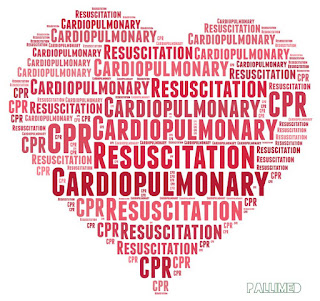In the ED we see kids with coughs and colds every day. Among those, a number of children have bronchiolitis. Few
diseases have a greater effect on the health of young children than viral lower
respiratory tract illness. Approximately 800,000 children in the United States,
or approximately 20% of the annual birth cohort, require outpatient medical
attention during the first year of life because of illness caused by
respiratory syncytial virus (RSV). The simplest way to think about this disease that will help identifying children with bronchiolitis is this: Imagine an infant (or toddler) with a cold, pouring boogers from his nose, who looks sicker than the usual "cold". Yes... that's it! Think about it as the "Atomic Cold"
RSV accounts for 50 to 80%
of all hospitalizations for bronchiolitis during seasonal epidemics in North
America. Although the clinical features of bronchiolitis due to different
viruses are generally indistinguishable, some differences in the severity of
disease have been reported. For example, it has been observed that
rhinovirus-associated bronchiolitis may result in a shorter length of
hospitalization than bronchiolitis that is attributable to RSV. Differences in
the response to medical intervention have not been identified consistently
among children with bronchiolitis caused by different viruses.
No available treatment shortens the course of
bronchiolitis or hastens the resolution of symptoms. Therapy is supportive, and
the vast majority of children with bronchiolitis do well regardless of how it
is managed. The intensity of therapy among hospitalized children has been shown
to have little relationship to the severity of illness. In 2015 the AAP updated its guidelines for the diagnosis and treatment of bronchiolitis. The evidence-based
guidelines emphasize that a diagnosis of
bronchiolitis should be based on the history and physical examination and that
radiographic and laboratory studies should not be obtained routinely.
Short-acting β2-agonists, epinephrine, and systemic glucocorticoids
are not recommended for the treatment of children with bronchiolitis. However, and this is my opinion only, I think these guidelines fall short in helping clinicians what to do when confronted with a sicker child with an "atomic cold". During each winter this scenario plays more than once per shift. A child who looks sick with a cold, very sonorous respirations, lots of secretions, chest sounds like a washer machine, maybe some retractions, slightly tachypeneic and with SaO2 in the low 90's or upper 80's. Sounds familiar? Of curse it does.
Typical x-ray findings of peri-bronchial thickening
The guidelines say that nothing works. What am I supposed to do?! Should I just tell the parents "Your child has bronchiolitis, there is nothing to do, but bring him back when he turns blue". Really..?! That's just non-sense. I think that for the sake of the child, tranquility of the parents and the sanity of the practitioners; doing nothing in bronchiolitis is not an option. In my opinion every kid should received "nebulized something". There is some evidence that albuterol and steroids may work in atopic kids, that racemic epinephrine may reduce admission rates and hypertonic saline decreases length of stay. If there is increase work of breathing or the child is not responding, maybe getting an x-ray to rule out pneumonia may be helpful. Regardless of your approach, aggressive suctioning and PO challenge before disposition are mandatory. Also assess the parents. How are they managing at home? If after all is set and done, the child still looks "iffy" or there is a hint that parents won't be able to cope at home, just admit the child. We have to worry about a lot of things in the ED, sending home a potentially sick kid is something we don't need to lose sleep on.
Pictured above is the most wonderful machine and the best gift for parents with young children. If you do send the child home, make sure to go over the logistics on how to do home care, suctioning and educated parents on how to monitor the respiratory rates as well as warning signs and symptoms to bring the child back to the ED. What I usually say is this: "Your baby is a booger factory and the more mucous you suction the better he will breathe and eat. Do the nasal saline drops followed by suction before each feeding and before sleep, watch for increased work of breathing (nasal flaring, grunting and retractions) and if your baby refuses to eat or drink, or you are concerned or have any questions, just bring him back. Remember to wash your hands well and often, no smoking around and keep other young children away".
Happy new year to everyone; and thank you for taking care of the little patients!

























